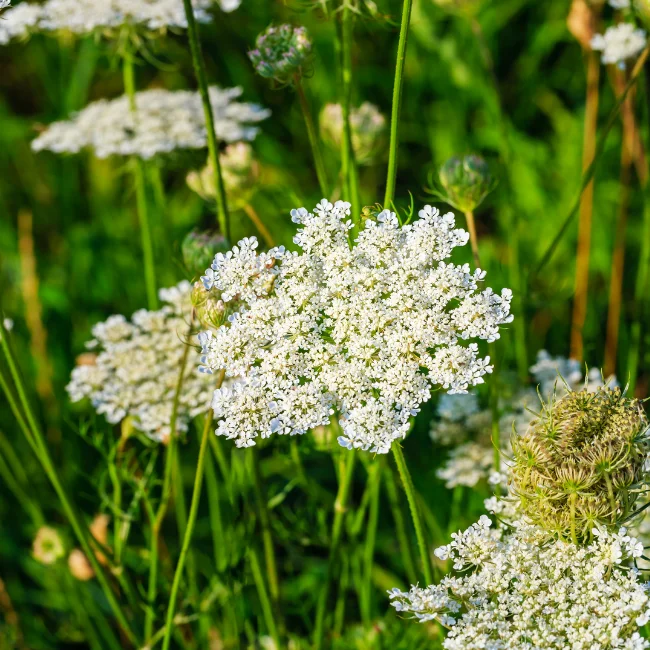
Description
Caraway is a biennial plant that reaches a height of roughly 30 inches. The delicately cut leaves are similar to carrot leaves, and the blooms are arranged in flat, white clusters. The plant resembles other members of the carrot family in appearance. It grows on 20–30 cm stems and has fluffy, finely split leaves that resemble threads. Little white or pink blooms are arranged in umbels on the main flower stalk, which is 40–60 cm tall.
Habitat
Native to Europe, caraway is also found in North Africa and western Asia. Though it can sometimes be found naturally occurring around abandoned crofts and farm cottages, its native habitats include well-drained sunny meadows, hills, and roadside areas.
Uses
Caraway fruits are used in various traditional systems as a carminative, appetizer, galactagogic, and as a treatment for indigestion and pneumonia. Traditionally, caraway has been used to treat digestive problems’ symptoms, such as bloating and flatulence.

Varieties
There are caraways that are annual and perennial in nature. Compared to the annual variety, the biennial caraway is farmed more extensively and yields higher yields. In its second year, the biennial caraway grows a flowering stalk after producing a rosette of leaves in the first year, and then it dies.
Plant Care
- Soil
Sandy soil that drains effectively is ideal for caraway growth. Its ideal pH range for soil is 6.0 to 7.0. Before planting, fill planting beds with old compost. Even with ordinary soil, caraway will grow.
- Mulching
Cover plants with leaf mold, straw, or aged compost if the soil freezes during the winter to protect the roots.
- Watering:
Caraway needs to be watered consistently until it becomes established. Keep seedlings from drying out. Caraway, once established, may go almost completely dry in between watering. When blossoms start to appear, stop watering the plant; this will speed up the maturity of the seeds.
- Fertilizer:
When seedlings reach three inches in height and again when flower stems emerge, give caraway a gentle fertilization. In midseason, add some old compost as a side dressing to the caraway.
Table





